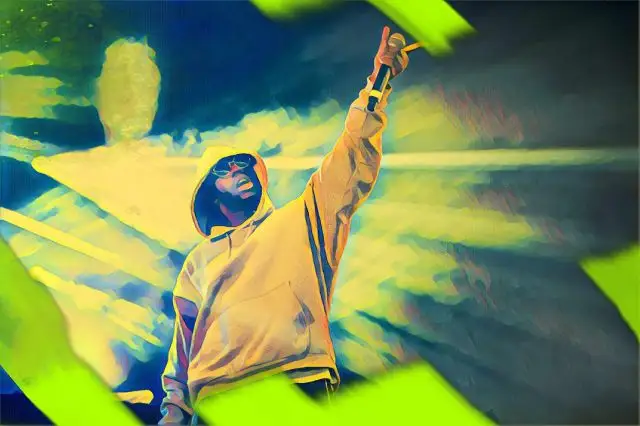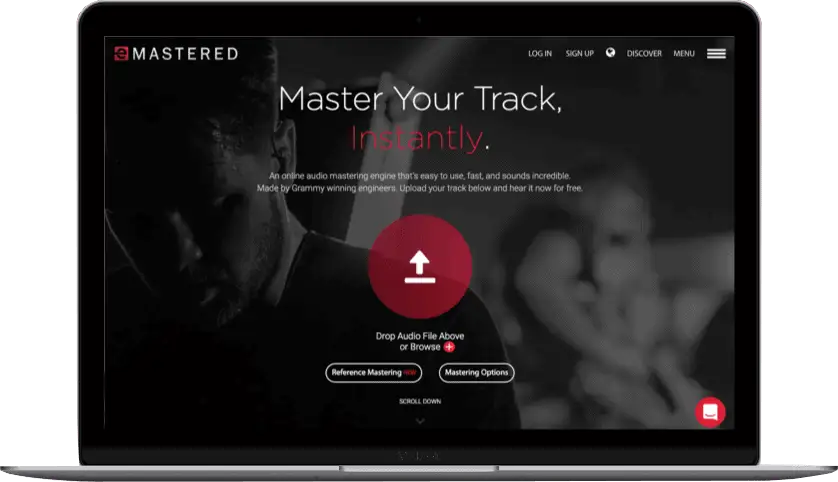Boom bap. It's more than just a sub-genre of hip-hop; it's a defining sound that captures an era when hip-hop culture was still breaking into the mainstream.
With a rich history, innovative production techniques, and a wide-reaching influence, boom bap laid the foundation for hip-hop production as we know it today.
In this guide, we'll take a deep dive into all things boom bap: its roots, its impact on the music industry, and how you can create your own authentic boom bap beats. Whether you're an old-school hip-hop enthusiast or an aspiring producer, boom bap’s legacy has something for everyone.
Ready? Let’s dive in!
What is Boom Bap?
To start off, let's take a look at what the term 'boom bap' actually means.
The words are phonetical approximations of the sound made by the kick drum ( boom ) and the snare drum ( bap ). The phrase was first used by T La Rock in the 1984 tune It's Yours to mimic the kick and snare pattern used throughout the song, but it wasn't until 1993 that the term boom bap became widely used. This was thanks to KRS-One and the release of his corker of an album Return of the Boom Bap.
Interestingly, some artists later used the term Boom Bap to describe the same thing, but boom bap was the phrase that stuck in the public consciousness.
While the influence of the boom bap sound has been far reaching, this sub genre of hip hop is most closely associated with the golden era of East Coast hip hop from the late 80s to early 90s.
History of Boom Bap
As is always the case when discussing the origins of a musical genre (or sub-genre), pinpointing the roots of when it all started isn't an exact science. So here's a broad-strokes history of how the boom bap style came about.
Origins
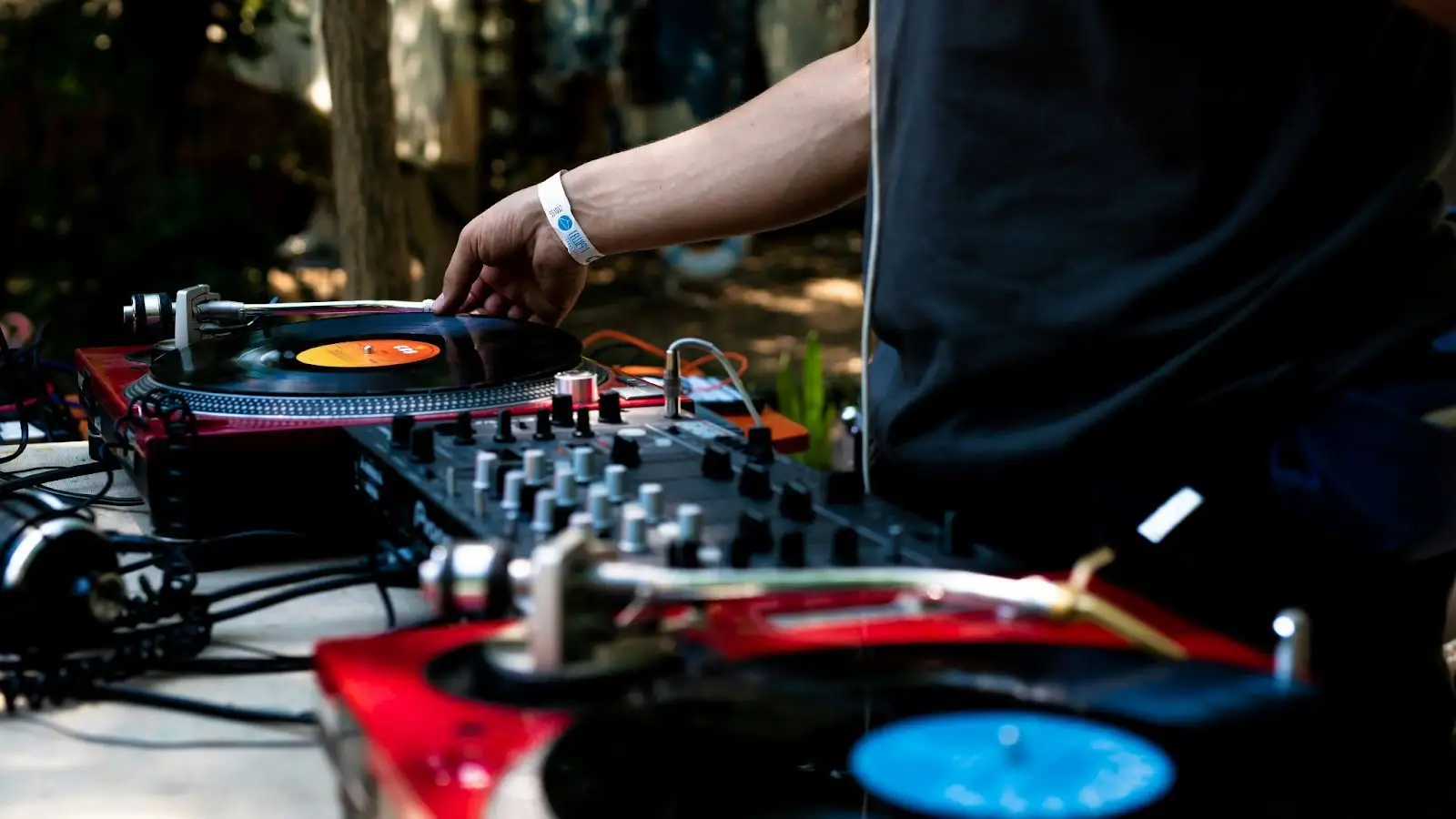
Hip hop began emerging in the early 1970s, thanks to DJ Kool Herc's innovative use of two turntables playing the same record to manually loop instrumental breaks in songs - an early form of sampling. He is also credited with pioneering the idea of MCs rapping over these breaks.
As hip hop culture gained popularity as an underground niche, artists like Grandmaster Flash refined the two turntable technique further, including soldering together his own crude version of what was later to become a fader, to make switching between the two decks much easier.
By the late 70s, hip hop music in New York City was in full swing. Disco was dying, and there were funk records a-plenty to draw from. These two styles formed the backbone of early hip hop music, but in the early 1980s the birth of the drum machine, used widely in new wave music, gave rise to a new form of hip hop; electro hip hop.
The mechanical nature of drum machines gave rhythms a sharp, distinctive sound, leaving room for the rapper to be more aggressive in their delivery. These sharper, tougher beats were favored by early hip hop producers like DJ Marley Marl, Jam Master Jay and Larry Smith, as they were considered to be more reflective of the harshness of New York City than the funkier styles of music used in early hip hop
Development
As mentioned above, T La Rock's It's Yours (produced with Jazzy Jay in 1984) was the first record to use the phrase 'boom bap'. It could also be considered to be the first boom bap record, since it contains all the elements of what would later become the boom bap aesthetic. More on that later.
At this time West Coast rap music was emerging and developing its own distinctive sound, smoother than its East Coast cousin. Meanwhile, the New York rap music scene was dominated by hip hop artists such as Eric B & Rakim, The Juice Crew, and Boogie Down Productions.
In 1988 Akai released a piece of gear that would change the way hip hop was produced forever, and lead to the development of the classic boom bap sound.
The Akai MPC came out in December 1988. This piece of hardware gave producers the ability to sample sounds and chop them up into small segments. While this may not sound like a big deal given what a hip hop producer can do in today's computer-driven DAWs, back then it was radical. Plus the cost was eye-popping; it sold for $5,000 - about $13,000 in today's money. Give me a free copy of Garageband any day.
These advances in technology meant hip hop beats could be constructed from any source material, drum sounds or musical snippets. Take the bass drum from one record, and the snare drum from another. Add in a hi hat from somewhere else, and a jazzy piano loop from one of your dad's old vinyl records, and you'd have the making of a decent boom bap track on your hands.
This technology had it's limitations - the sampling rate was only 12bits at 40kHz - but notable producers like Pete Rock, DJ Premier, and J Dilla learned how to use this to their advantage, and the lo-fi sound became an integral part of boom bap beats.
Something else the MPC brought to the table was the ability to finely quantize beats . This led to the swing feel that gave boom bap songs their distinctive rhythmic sound.
Around the same time MCs were developing a more serious side when it came to lyrical content and rap groups often dissed each other through song. Schooly D developed the hard hitting style that led to gangsta rap; cussing, violence, controversial opinions began to find their way into lyrics, and this had a direct influence on the lyrical content of Boom Bap as we know it today.
Old School Boom Bap Artists
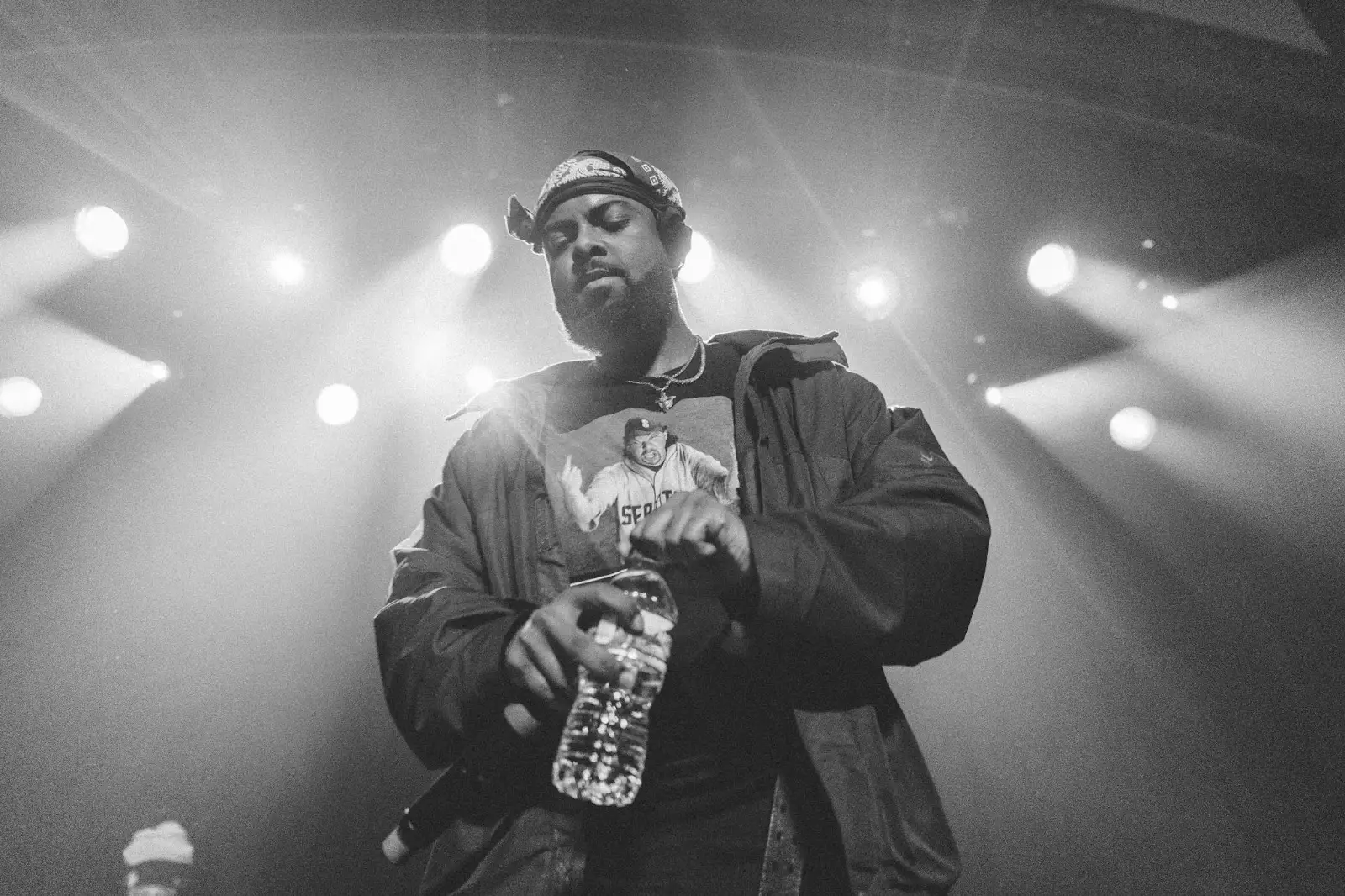
This new way of making of hip hop characterized a golden age for the genre. Hip hop artists like LL Cool J, De La Soul, The Beastie Boys, Wu Tang Clan, and Gang Starr all had hit records that found their way into mainstream popular music.
And of course, KRS One and his 1993 album Return of the Boom Bap. This classic boom bap album represented the height of popularity for boom bap beats. The artist summed up the vibe of boom bap in a nutshell; getting the most rhythmic sounds using the least amount of instruments.
See below for some recommended boom bap listening!
The Influence of Boom Bap
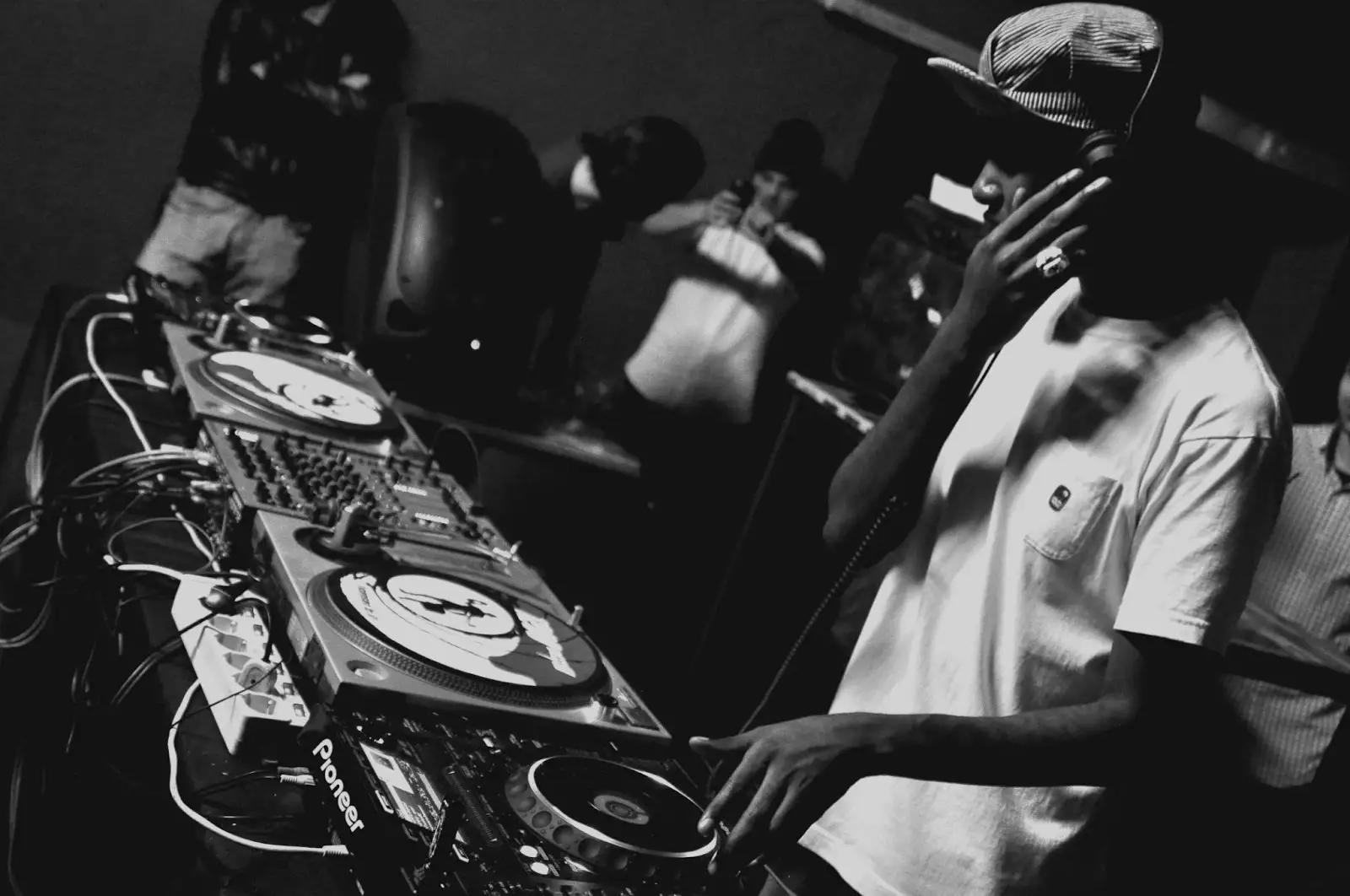
Modern hip hop has moved on beyond the early days of a DJ's skills with a vinyl record. The art form, once considered a pariah by the music industry, has spawned many sub-genres like dirty south, gangsta rap, g-funk, and trap music.
But boom bap as a sub-genre of hip hop can be credited for providing the founding elements of modern hip hop and rap music, as well as other forms of electronic music.
Boom bap itself made its way across the pond in the early 1990s, heavily influencing the UK rap scene, moving through to South East Asia in the late 90s through early 2000s.
Some people nowadays use the term boom bap to refer to something that is outdated, but there are still modern artists that use the hard hitting sound of boom bap production in their work. The sub-genre enjoyed a small resurgence in 2019, especially in the UK. Go Brits!
Essential Boom Bap Listening
If you want to create your own boom bap music (or you just want some cool, non-algorithmically generated tunes to check out) I'd highly recommend listening to the following to get a feel for the genre.
Albums
Nas: Illimatic
A Tribe Called Quest: The Low End Theory
Gang Starr: Moment of Truth
Joey Bada$$: 1999
Lord Finesse: The Awakening
Singles
The Notorious B.I.G: Unbelievable
Mobb Deep: Shook Ones Pt.II
KRS One: MCs Act Like They Don't Know
Black Moon: Who Got Da Props
Jeru the Damaja (produced by Dj Premier): Come Clean
Elements of the Boom Bap Sound
Before we head into a step-by step guide on how to create your own boom bap beat here's an overview of what makes up the classic sound.
Drums
Most important of all are the drum sounds. A hard bass drum gives you the 'boom', and a snappy snare gives you the 'bap'. Often, combinations of sounds might be layered to create a bigger sound.
The beat itself should be fairly straightforward - no funky drummer programming necessary! The core beat should leave space for the MC to keep the focus.
Hi-hats come into play to fill in the space between the kick and snare, and swing quantization should be used to get that authentic golden age feel.
Sampling
Classic boom bap songs relied heavily on sampling - often records from the 1970s and before. These samples were often low-grade, due to limitations in the technology available, but producers leant in to this lo-fi quality, and it became a defining characteristic of the boom bap sound.
Nowadays sample clearance is hard to get, and often expensive. But artists can still re-create the feel of an old-school sample by re-sampling something they've recorded, processing it, and chopping it up.
Vocal Content
On top of a rapper boom bap songs often incorporated vocal samples and shout outs.
Mix
Boom bap songs tend to keep the kick and snare front and center, with the vocals sitting nicely on top. Everything else can be pushed into the background, in part due to the lo-fi, raw sound of the genre.
How to Create a Boom Bap Beat: A Step-by-Step Guide
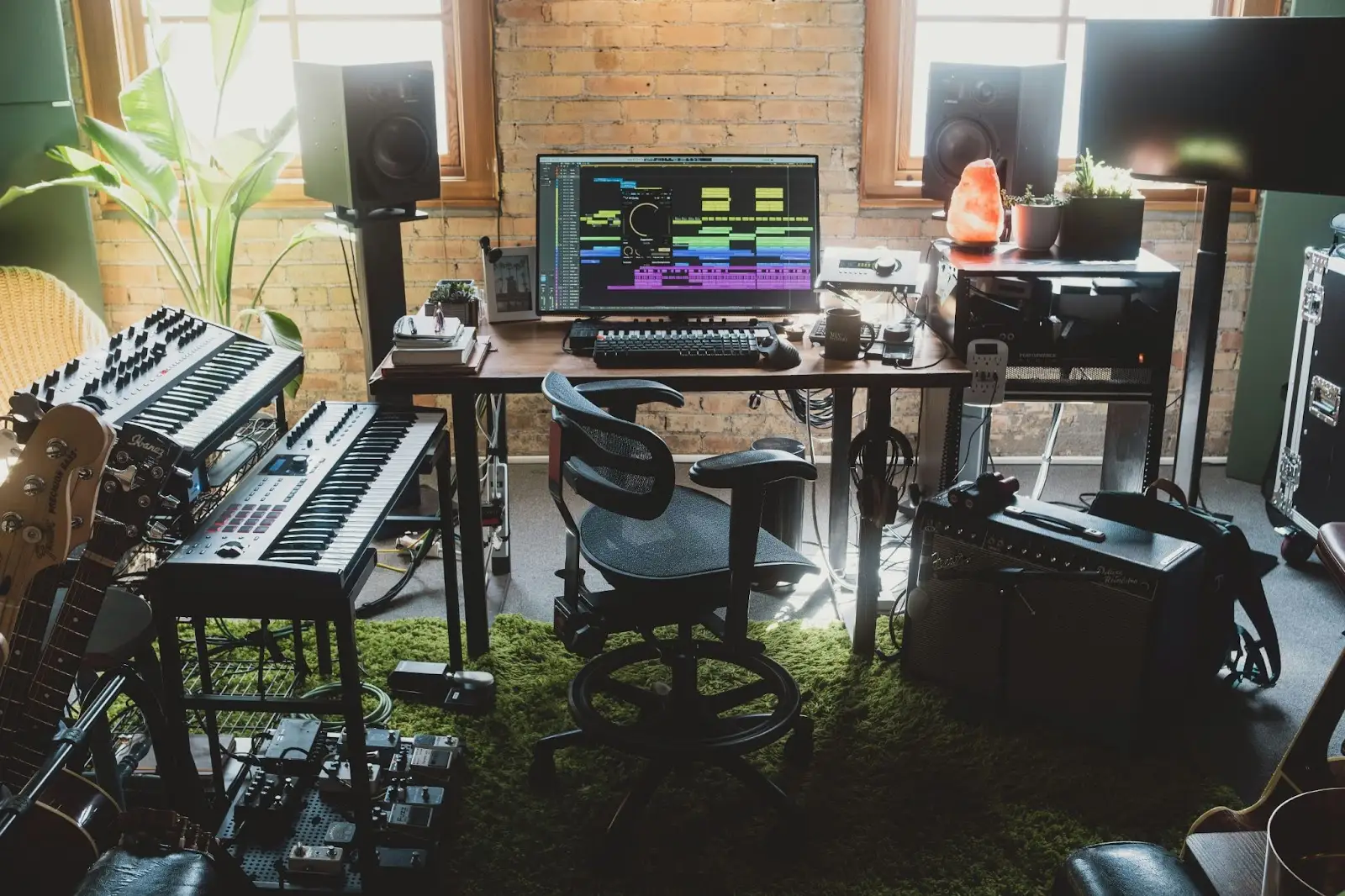
In this how-to guide I'll be using Logic as my DAW, and a selection of instruments and samples from Native Instrument's Basement Era expansion pack. But you can use any DAW to recreate these steps, and there's a ton of free samples available on the interwebs, so you don't need to reach for your wallet.
Programming Drums
First off I want to set the tempo. Boom bap can typically range from 80 - 100 BPM. I'm setting my session to 93 BPM, and created a 1 bar MIDI region to begin programming the drums.
Old school hip hop relied heavily on analog drum machines, particularly the TRS-808. I've found a nice boomy 808, and an acoustic sample of a kick drum to layer up. I've programmed these on the first beat, and the second half of the third beat.
I'm also layering a couple of contrasting snare samples to make for snappy snare sound, which I've put on beats 2 and 4.
Finally, some crisp hi-hats play eighth notes. To keep things interesting I'll add a little skip just after the third beat, quantized with some heavy swing.
While most of the notes are at 100 velocity, I've made the downbeat of the kick drum slightly harder, and reduced the velocity on the hi hat skip note.

Nice, but keep that 1 measure going over an entire song and it will get old real quick. I've looped the pattern over 4 measures, and added some additional kick drum notes, and an open hat and variation snare sound at the end of the loop.
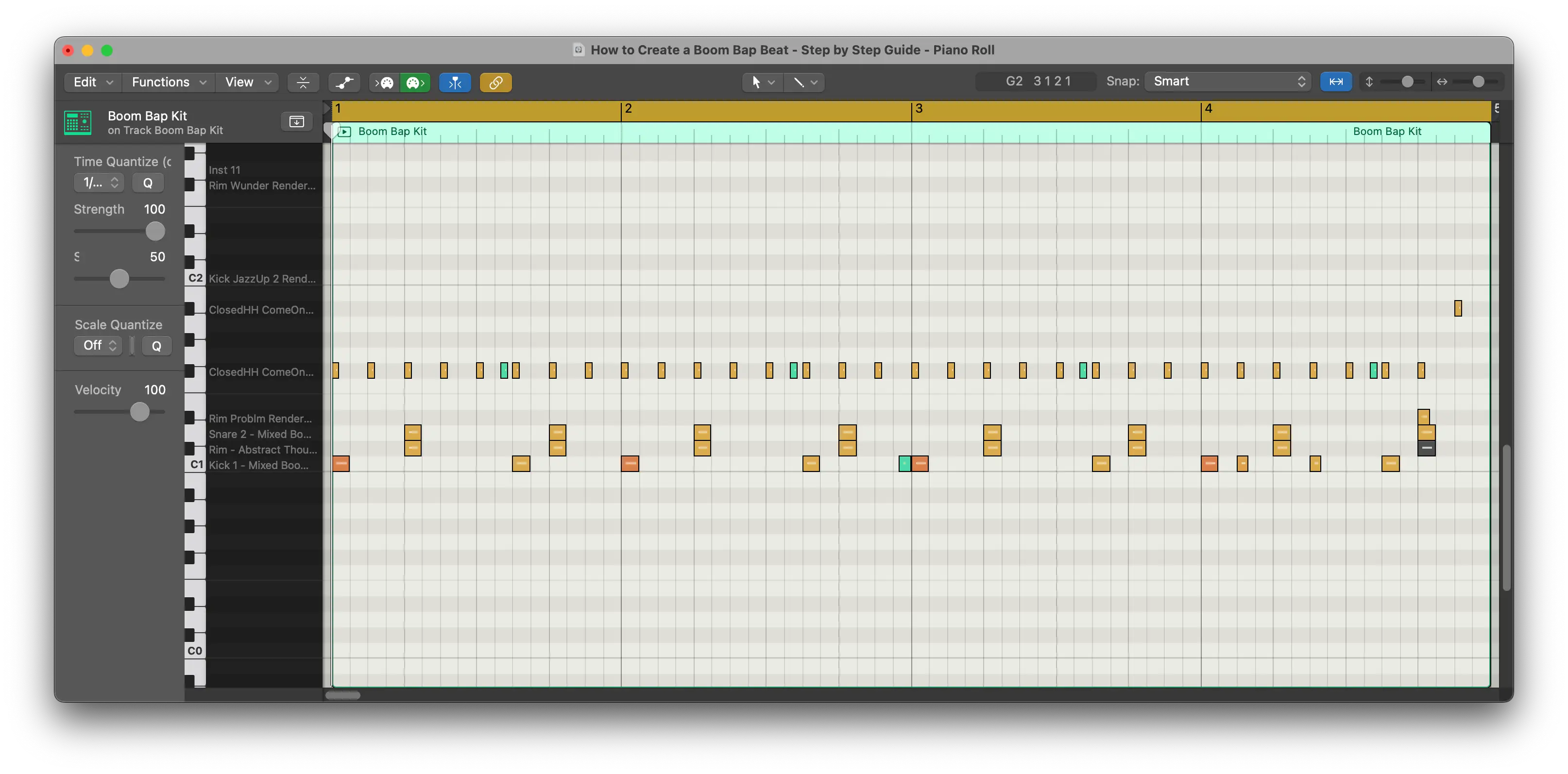
Adding Samples
As discussed earlier, using samples of old vinyl recordings is a rocky road to travel, so I've found a couple of licks in the Basement Era expansion pack to use in this track. To make the whole thing sound a bit more old school I've added some vinyl crackle looping in the background.
Note that I've added the samples before the bass line so I can establish the key first.
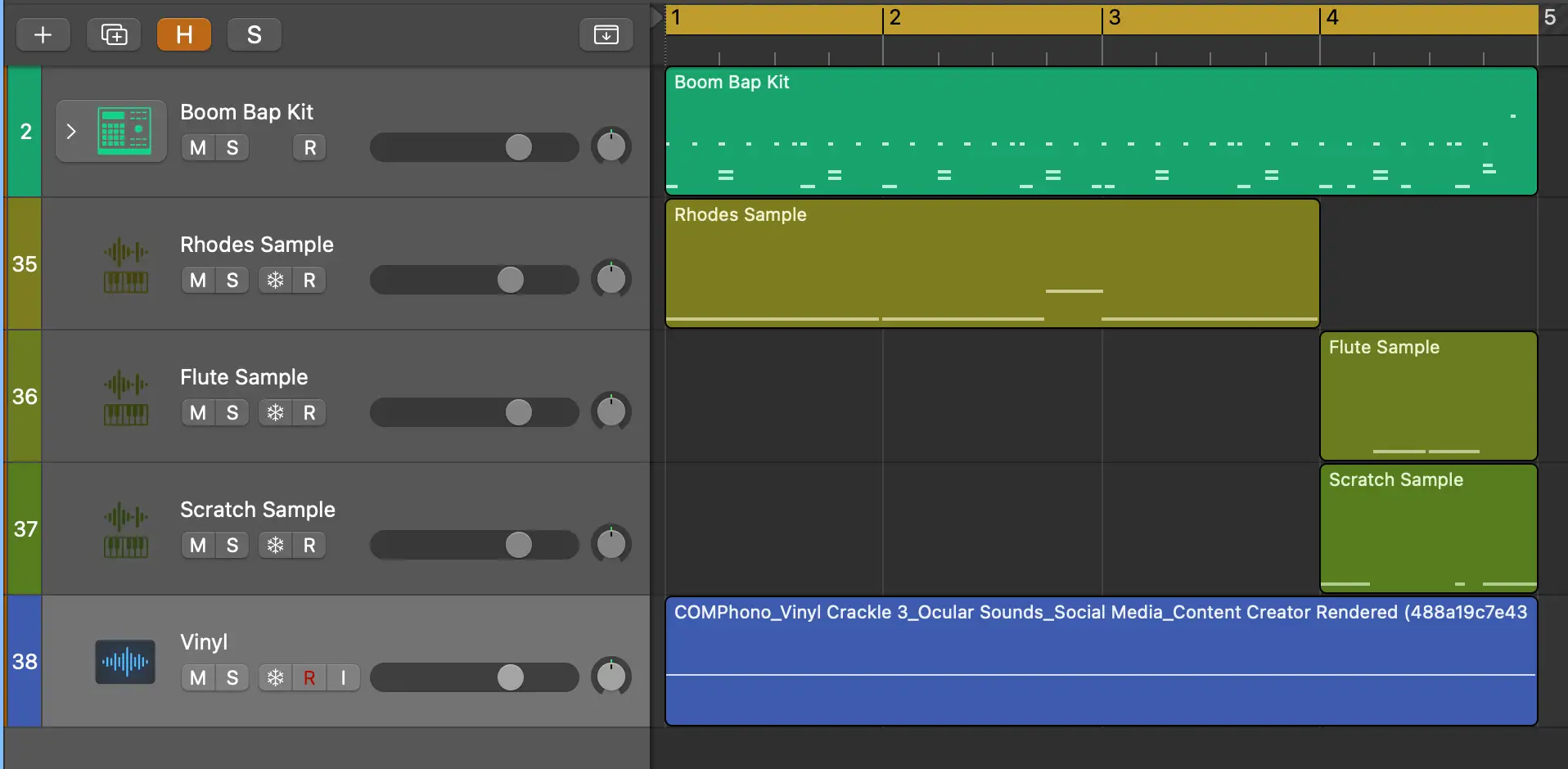
Bass
Now I know where things lie harmonically I'll add a bass line. I've taken a one shot bass guitar sample to use for the sound, and added some bit crushing to take the resolution down to 12 bit - the same bit rate that original boom bap samples were made at.
Here I'm using Logic's native Quick Sampler for the one shot sample, but any VST sampler plug in would do the job.
I've quantized the bass to the same heavy swing as the drums so they'll all play nicely together.
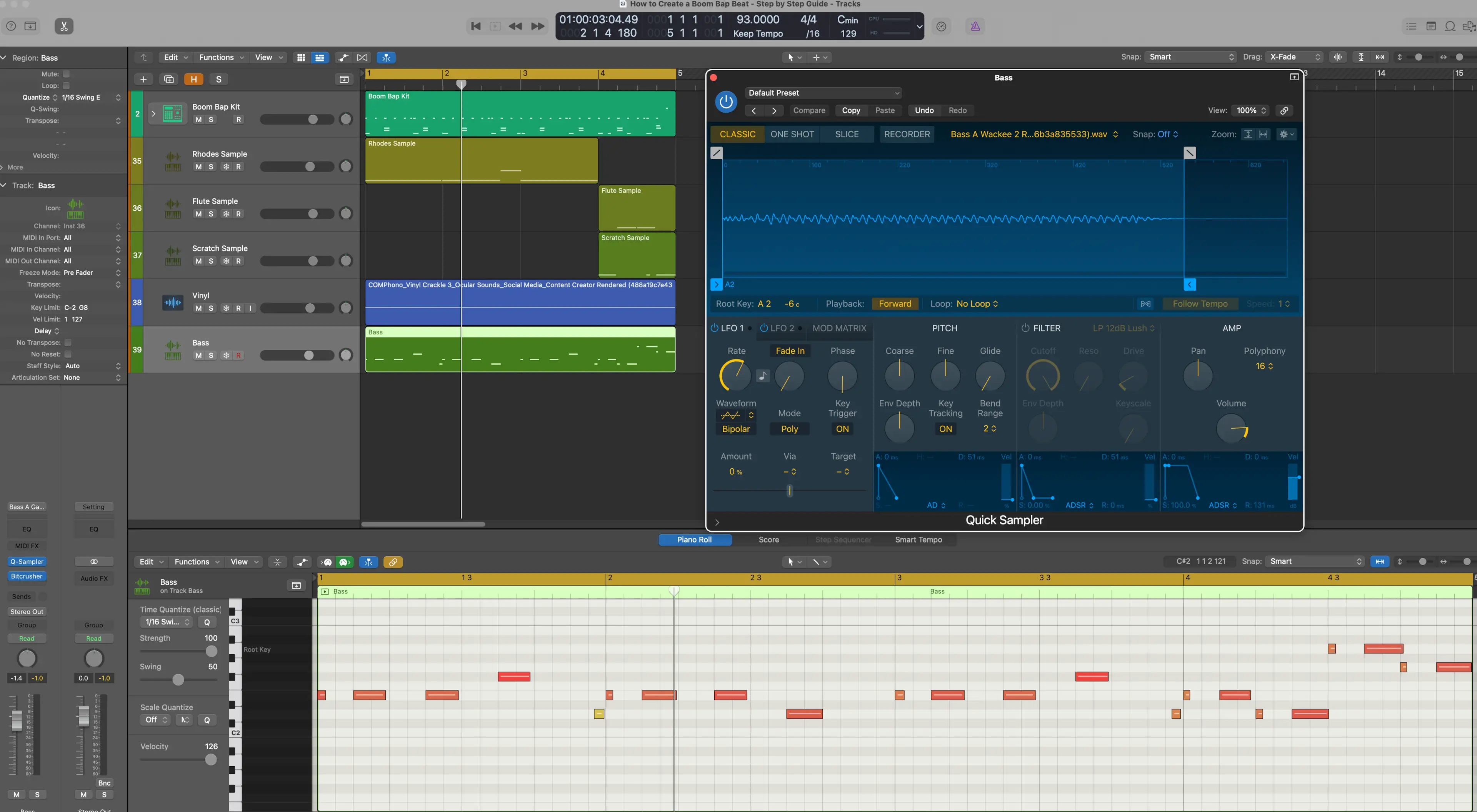
Build the Arrangement
The next step is to build the arrangement of the track. How you do this may depend on whether you're simply creating a beat to sell, or already have an artist in mind to add vocals to the song.
There's not a lot of elements in this track, and I want to keep it that way to leave plenty of room for the vocalist.
Intro
I've stripped things back, and muted the kick and snare to create an intro.
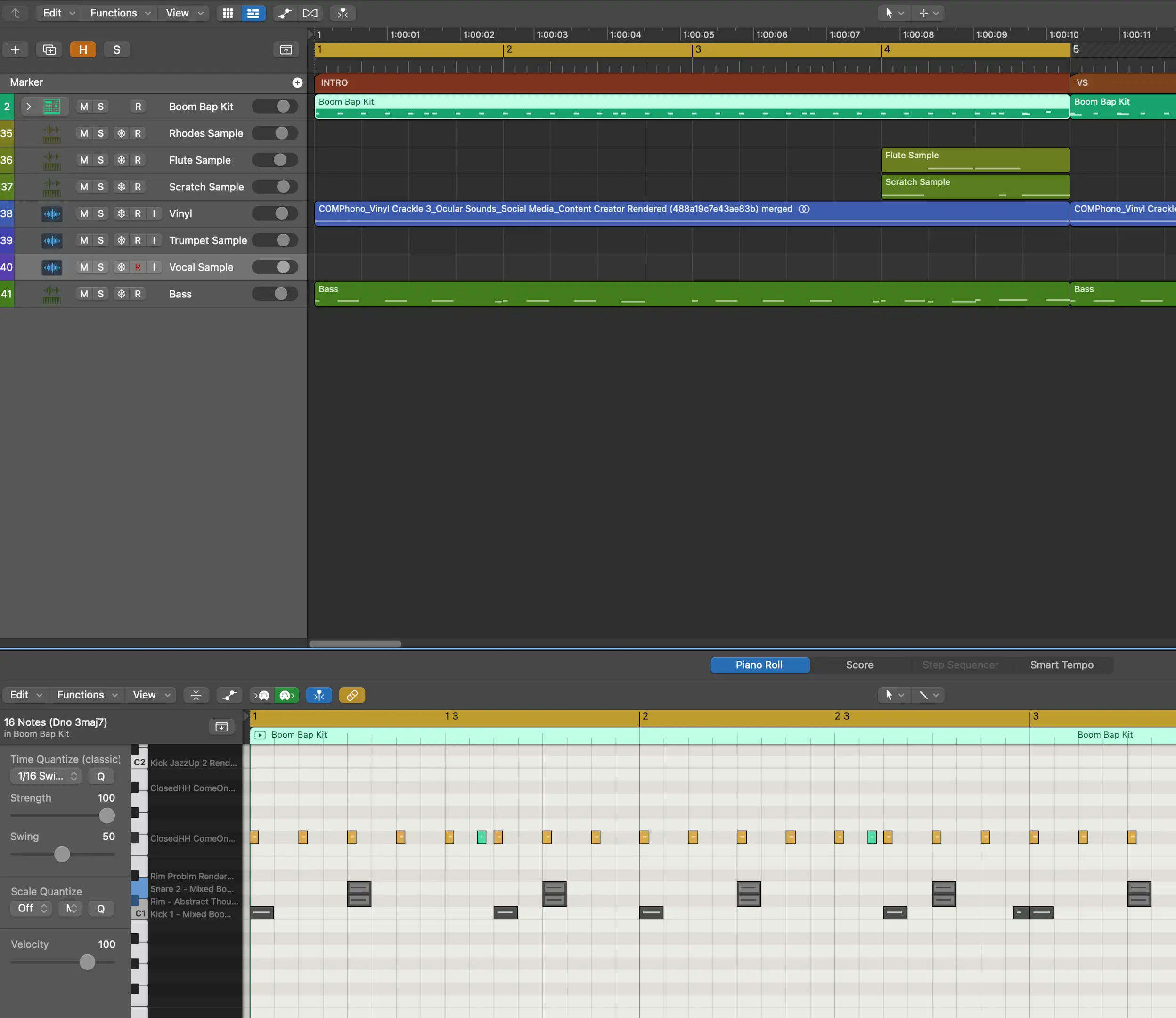
Verse
Keeping with the less-is-more aesthetic, I've used the main loop, minus the rhodes sample, for the verse. Right at the end I've dropped the drums out completely to lead into the chorus.
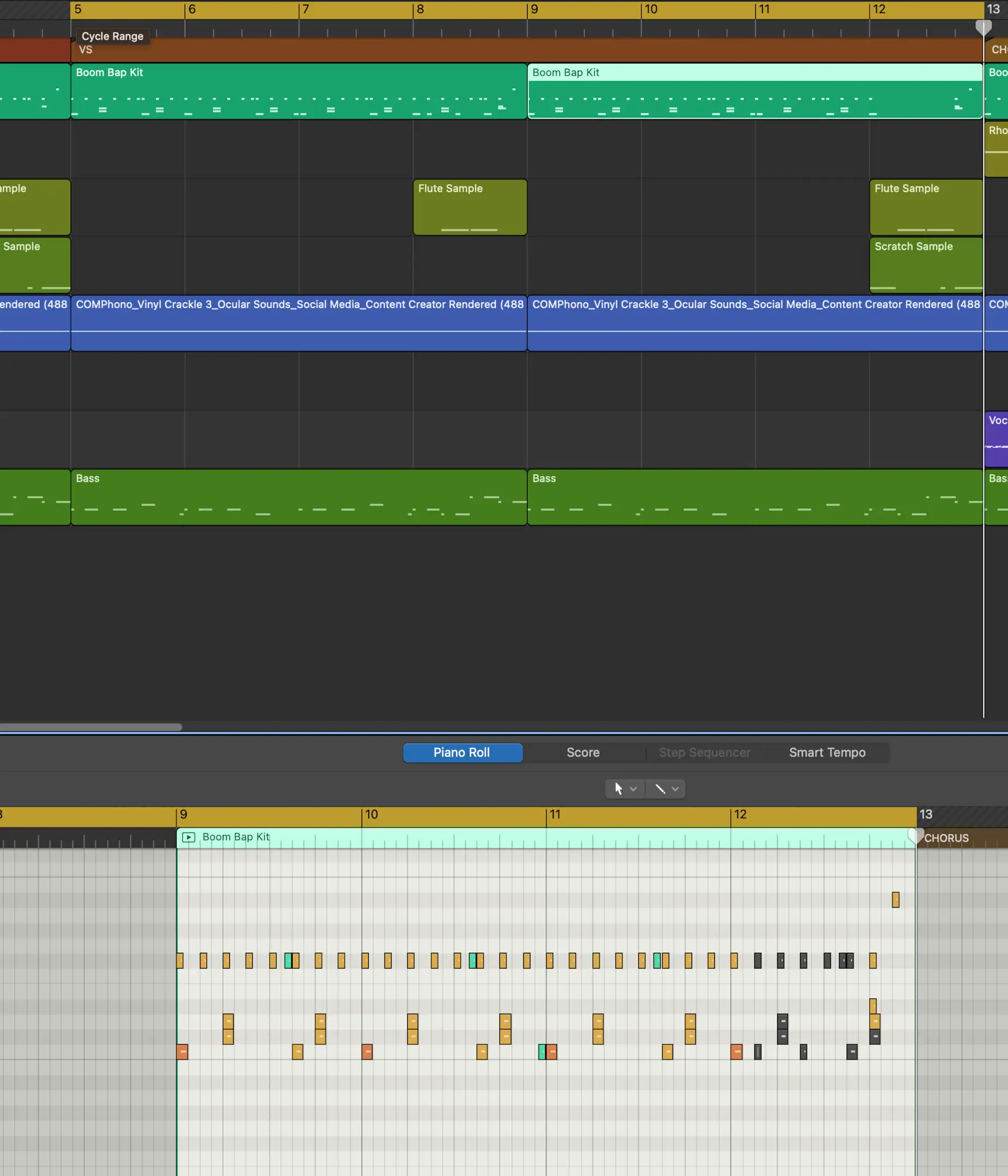
Chorus
To lift things a little in the chorus I've added a vocal sample, and brought back the rhodes sample, tweaking it a little at the end with a rising figure.
To close out the chorus I've found a jazzy trumpet lick which I've pitched up to match the key.
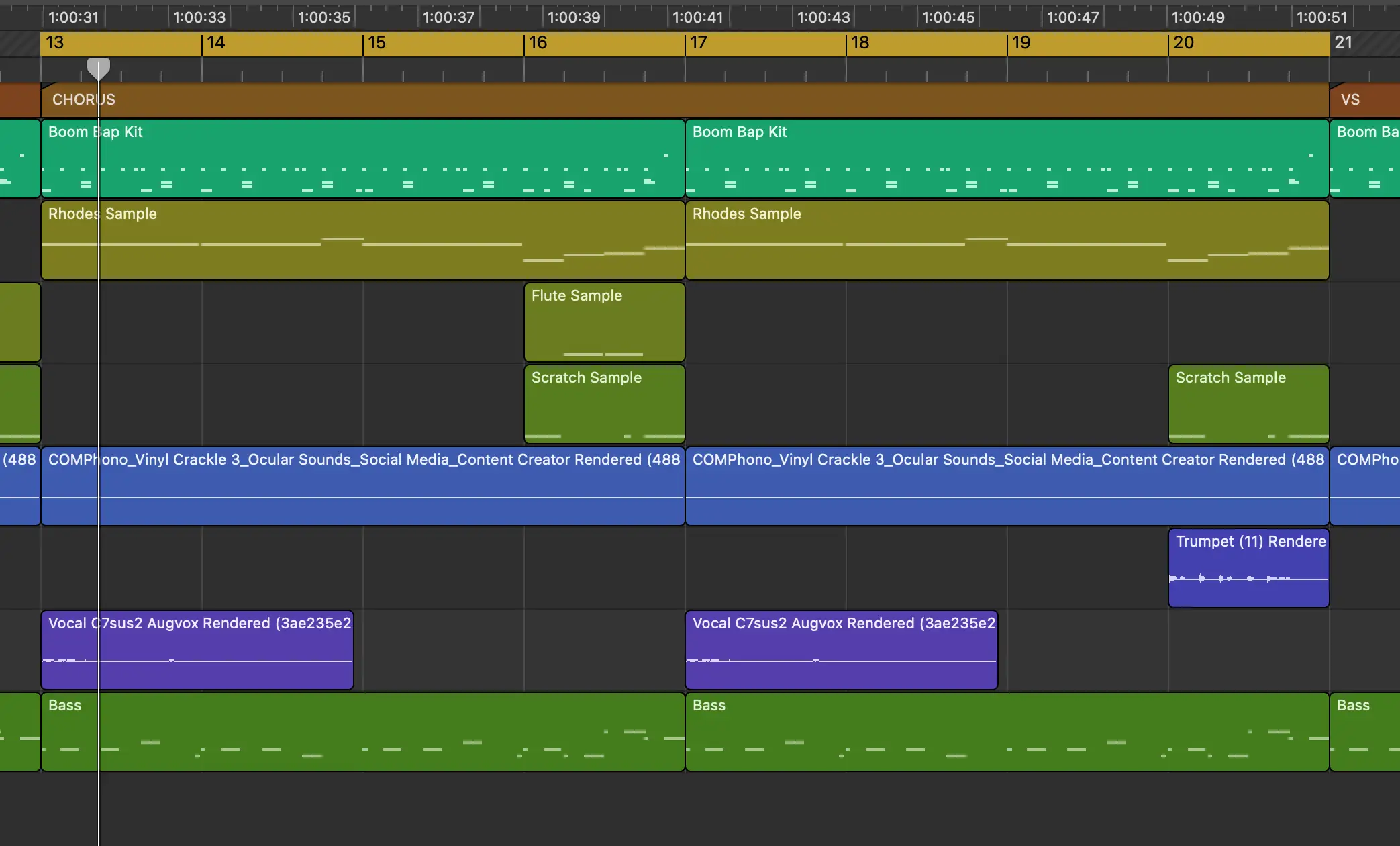
FINAL ARRANGEMENT
I've copied and pasted the verse and chorus, and added a 4-bar drum break before the final two choruses to complete the full arrangement. I've also added a fade-out as the chorus repeats.
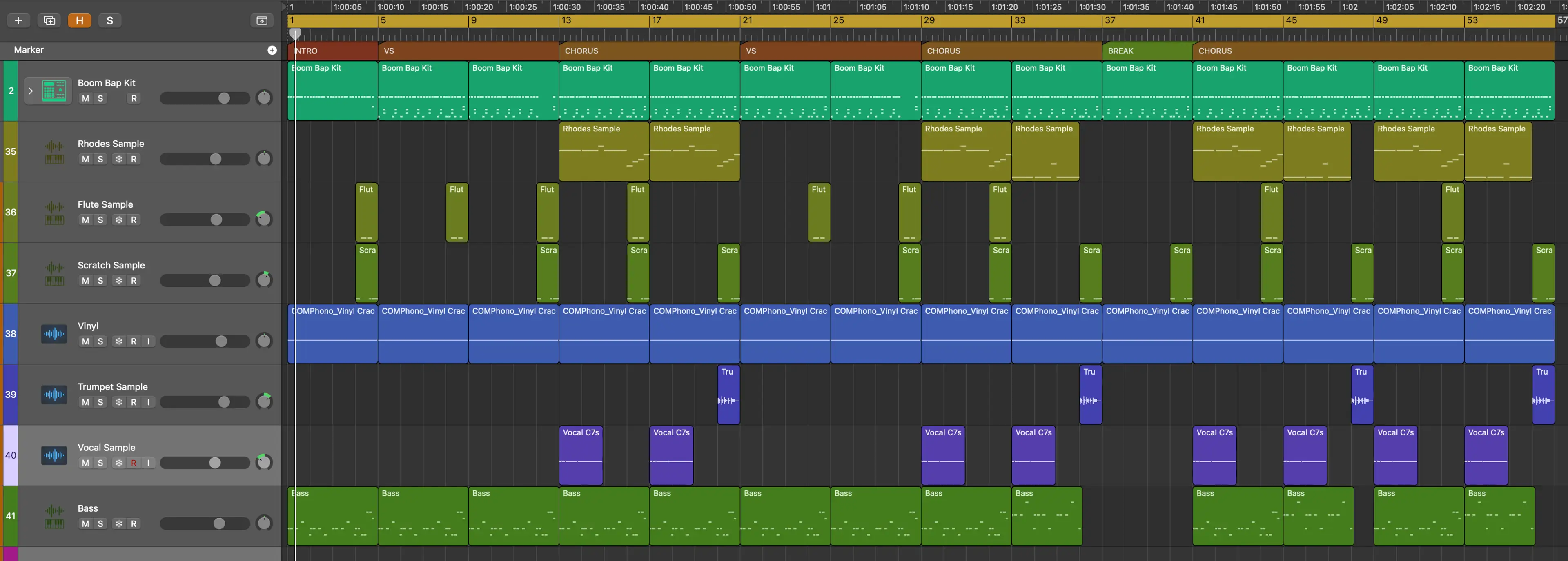
Mixing
Mixing a hip hop track is worthy of its own article , but here's a brief overview of what I've done here to pull things together, and create a little more space in the mix:
Drums:
Vintage compression is a great way to conjure up that old school sound and add some oomph to the beat. Here I've used one of Logic's vintage compressor emulators, and set the attack quite high to allow the transients to push through before the compressor kicks in.
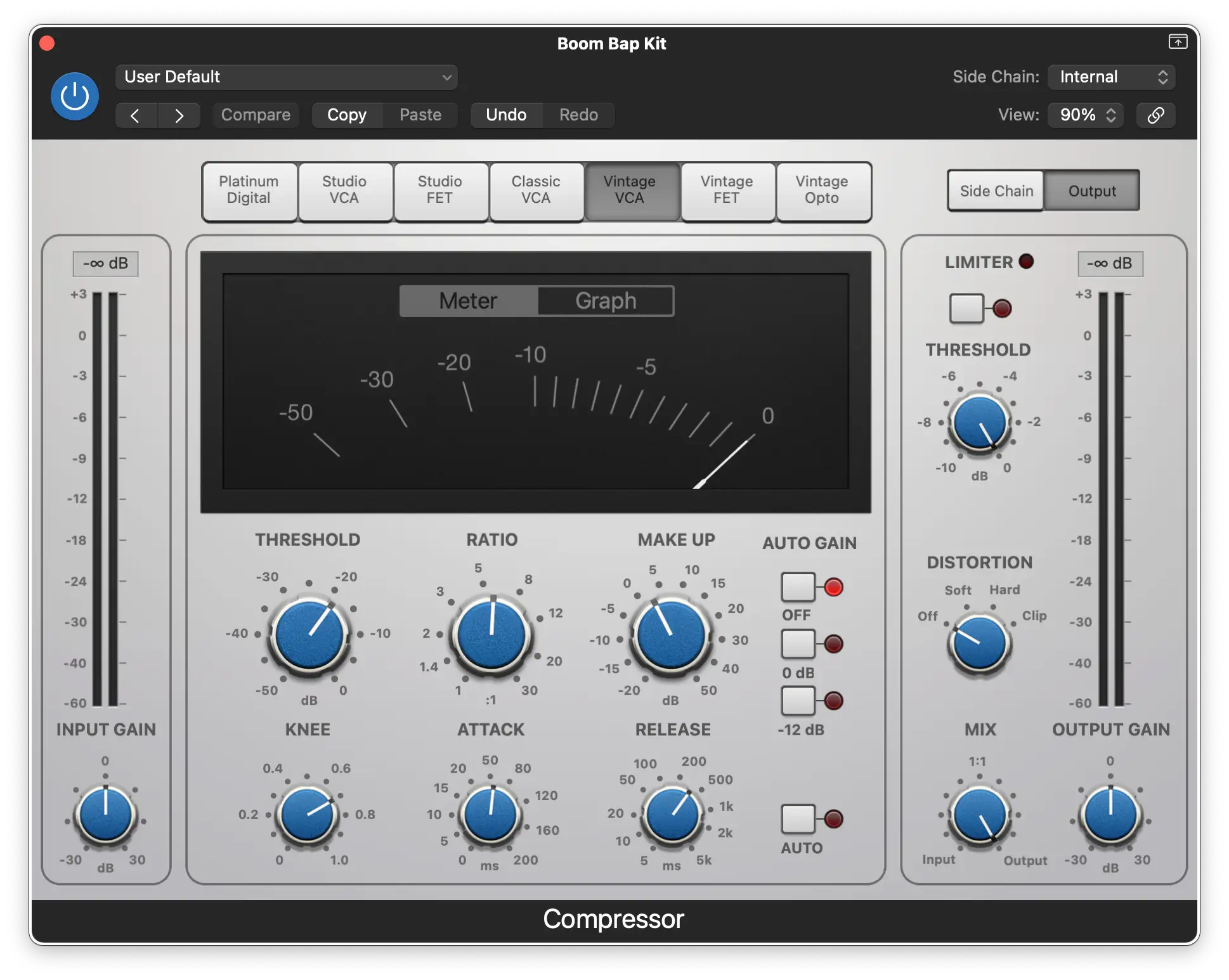
Bass:
I've also added a little compression to the bass to keep it under control.
VOCAL SAMPLE:
This was a little too up front, so I've tucked it back in the mix, and added some bitcrushing, delay, and subtle distortion to help it sit better with in the mix.
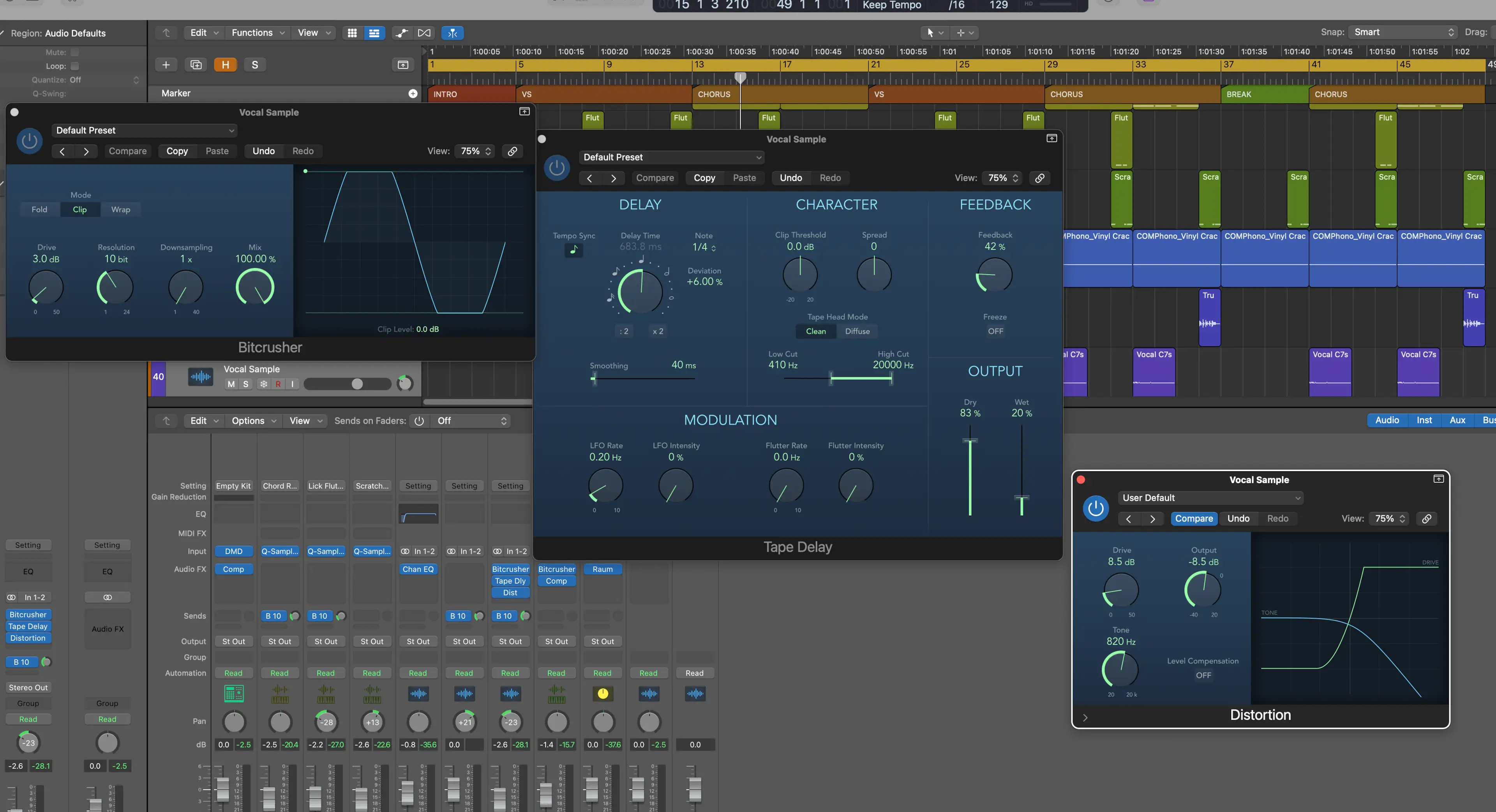
Reverb:
Finally, I've added space to the other elements of the track by feeding a bus send to a reverb aux track.
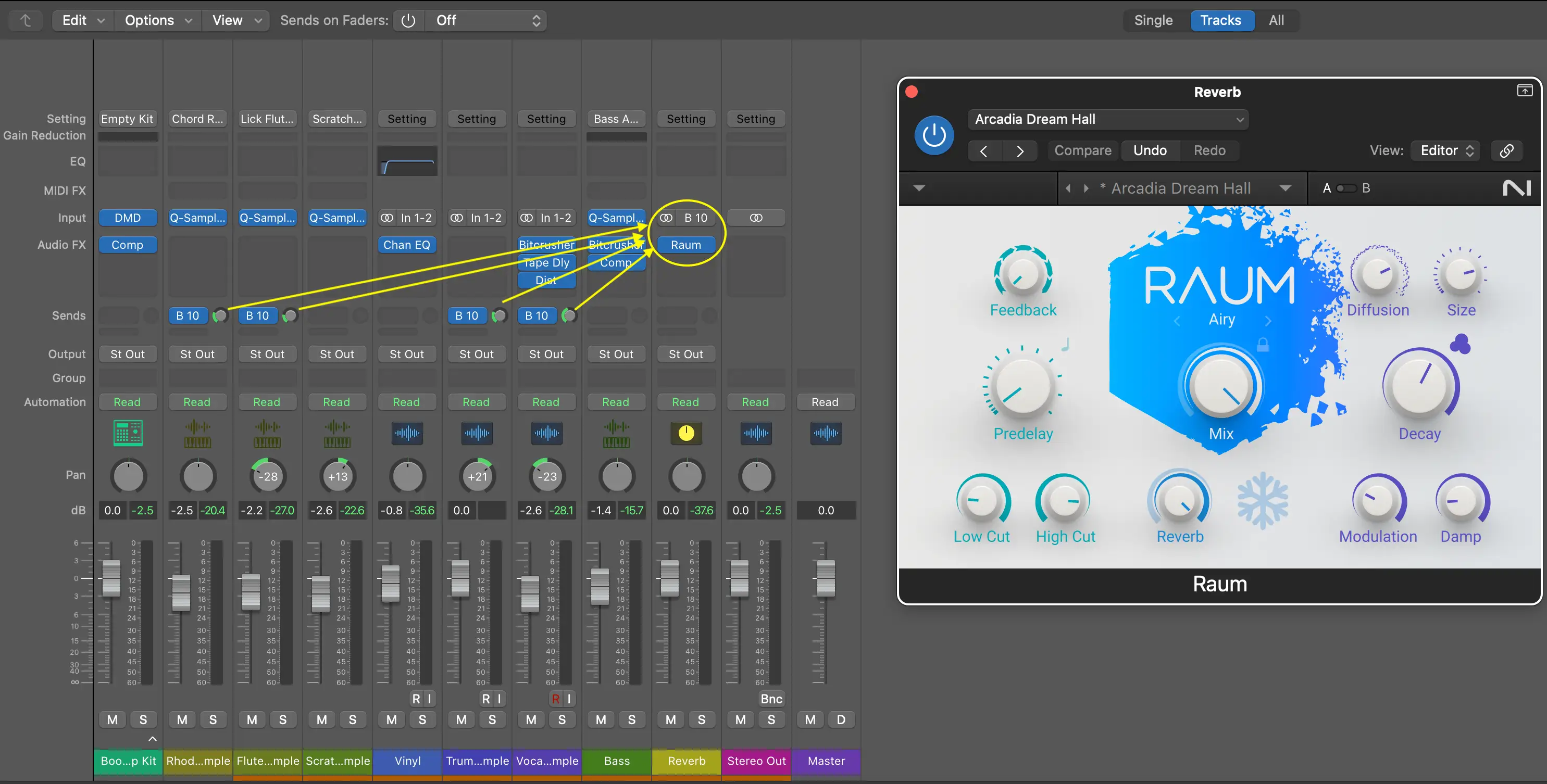
Mastering:
When it comes to mastering you can either do it yourself , hire a professional, or use a service like eMastered to handle the duties.
Here's the final arrangement, unmastered:
And here's what it sounds like when it's been mastered by the lovely folks at eMastered:
So there you have it! A full run down on everything boom bap, and how to re-create this influential part of hip hop culture yourself. Now go forth, and maketh the music!


